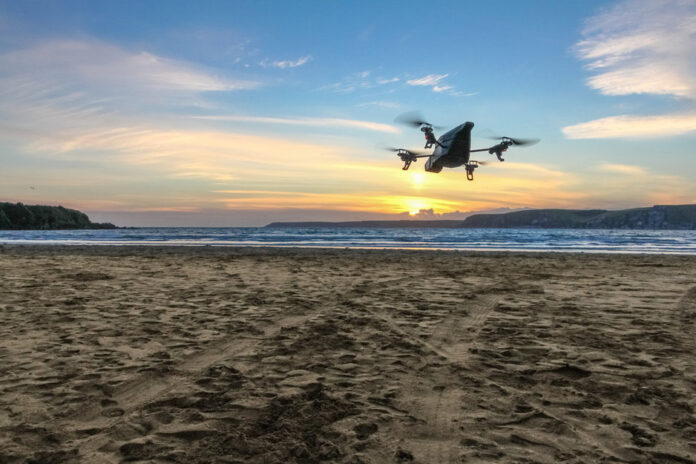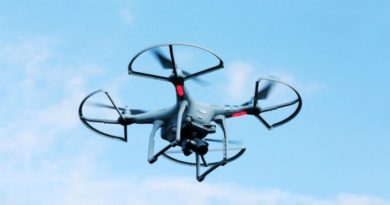Drones for Marine Monitoring
Guest post by Emily Folk
Marine monitoring is an essential task for scientists. The wildlife, plant life and environment are key areas of study, and with the right equipment, researchers can optimize their jobs and gain more insight. While traditional methods of monitoring — by plane, on foot and through satellite — are helpful, unmanned aerial vehicles (UAVs) are offering a breakthrough. Drones for marine monitoring are now the future.
Drones Over the Alternatives
Data collection is one of the most important parts of any marine scientist’s job. Researchers need information on species and geographic location. On foot, this process would be tedious and inefficient.
Instead, many researchers turn to piloted aerial vehicles like planes or helicopters. Satellites, too, help with vast high-quality imaging and data collection. However, while these options have specialized camera equipment, costs add up. Using them eventually becomes more financially taxing than beneficial for the research.
Here, drones come in to save the day. UAVs are relatively new — at least in terms of widespread use. They’re fast, efficient and less expensive than the alternatives.
One key benefit is the ability to handle different weather patterns. Helicopters and planes must account for dangerous storms and environmental surroundings. In terms of marine monitoring, how the tides, waves and currents behave are necessary factors to take into account. Manufacturers now design drones specifically to handle severe weather while still collecting information.
A drone pilot can control the vehicle over vast ranges and landscapes. The high-definition images and videos are automatic — with some drones snapping a photo every three seconds. Collecting data through UAVs is now more versatile, with the vehicles able to get into almost any location.
How Drones Help Marine Monitoring
Drones have a significant amount of capabilities. From geolocations and mapping to their cameras, they are ideal tools for marine researchers. In any location, scientists need to monitor populations, take samples and collect data from the environment.
For instance, Alaska is home to a population of northern fur seals — a dwindling species. Typically, marine scientists have had to work in large teams for extended periods of time to monitor this seal population. On foot or by manned aerial vehicle, disturbing the seals would be inevitable. With drones, however, that process has become more efficient.
Drones are fast. They take images and videos quickly and can transmit them to a receiver station. That way, researchers aid the seals in real-time. They account for population, migration patterns, eating necessities and safety. To protect this species, scientists may sometimes need to act fast — thanks to drones, they can.
Similarly, out on the ocean, marine monitoring is now easier as well. If researchers take their boats on the water to collect information, they can still use drones. Monitoring species and the environment is about the details. Planes, helicopters and satellites typically provide broader information. Drones, though, can hover and focus on what’s happening on the surface of the ocean, or right below it.
Further, in instances of emergencies — like in natural disasters or dangerous situations — drones can reach places that humans can’t. Pilots can send them high up or into debris or tight spaces in a matter of seconds. That way, they can see any environmental issues or any wildlife that needs help along the coast.
The Future of Marine Drones
Drones are an evolving innovation. The UAVs of today are already getting some updates and new abilities. For instance, underwater drones are new steps forward changing the field. Instead of using drones for just aerial information, researchers can now take a deep dive without ever getting wet.
Collecting information underwater is just as important as on the surface. The plant life and wildlife under the sea needs the same monitoring and, at times, protection as a species like the northern fur seals.
Further, transmitting this data can use a few updates as well. If drones use machine learning practices in terms of categorizing the information they capture, then the researcher’s job would become even more efficient.
Sometimes, scientists have to sort through thousands of photos and videos. If machine learning were to take over, it could sort, for example, algae types into their own categories. Then, it could do the same for environmental samples as well as plants and animals.
Optimizing Ocean Study
Drones ultimately help optimize researcher’s jobs, with faster solutions for monitoring marine environments and ecosystems. Without them, aiding populations like the northern fur seal would be much more difficult. In the end, drones help scientists help the environment.
Bio:
Emily is a green tech writer who covers topics in renewable energy and sustainable design. You can read more of her work on her blog, Conservation Folks.


